Michael Jordan’s legacy is filled with clutch performance after clutch performance.
The highlight-reel career Jordan experienced in the 1990s filled a generation with wonder and awe. It showed the audience a new, more popular level of dominance that the league had to learn to recover from in the days after Michael Jordan retired. Jordan led a dynasty to two three-peats and forever changed the game of basketball in the 1990s.
In 1982, though, Jordan was a largely unfamiliar face to the sport of basketball. In his freshman year at the University of North Carolina, Jordan averaged 13.5 points per game. Despite the impressive numbers for a freshman, Jordan still found himself behind Sam Perkins and eventual Pro Basketball Hall of Famer James Worthy. In a time way before the “Big Three” became the talking point of basketball discourse, the 1981-1982 Tar Heels were blessed with options.
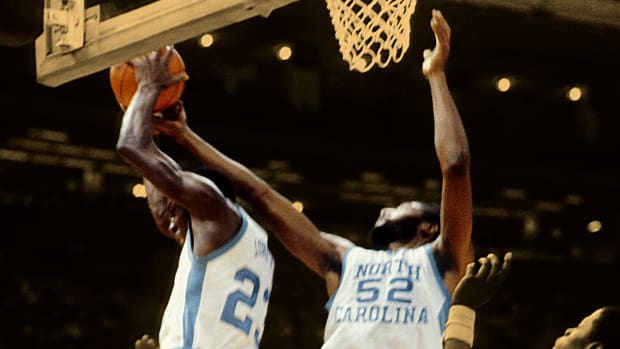
Michael Jordan and James Worthy battle it out for a rebound in 1982
Worthy, who would be drafted first overall by the Lakers the following NBA Draft, was the focal point of the Tar Heels, though. The offense ran through the eventual HOFer, as he lead the team in points and assists through the 1981-1982 season. In the tournament, Worthy and Perkins took turns at the top of the stat sheets. In the Semifinal matchup against Houston, Perkins would score the Tar Heels’ tournament high of 25 points. North Carolina would ultimately win that game 68-63. The NCAA Championship Game was set, as the Tar Heels were set to face Patrick Ewing and the Georgetown Hoyas.
As could be expected of a one-seed match up, the 1982 Championship was a close game. A freshman Ewing pushed his team forward. Ewing, who averaged just 12 points that season, stepped up big in the championship game as he lead the Hoyas with a 23 point effort.
With 32 seconds remaining, Ewing’s Hoyas tightly held on to a one point lead. The Tar Heels were set to inbound the ball on their half of the court, which meant all eyes were on James Worthy- who already scored 28 points that night, topping Perkins’ performance against Houston. Dean Smith, head coach of North Carolina, was not fazed by the fact they were trailing. How could he be after the performance James Worthy had that night?
Roy Williams, who at the time was Smith’s assistant coach, recounted the huddle and the game plan coming out of the time out. Worthy was playing out of his mind, so the plan was simple- find him for the lob. Williams further recalls Smith expecting Worthy to be double-teamed, thus making his next decision the one that would forever mark history.
“Coach Smith patted Michael on the backside and said, ‘Michael, if you get the shot, knock it in,'” Williams recounted. And so it went.
The Tar Heels inbounded the ball looking for Worthy. Smith’s expectation for double coverage were incorrect- as three Georgetown players hovered around Worthy, not two. North Carolina moved the ball around for about six seconds until Jimmy Black found freshman Michael Jordan open on the left side of the rim. With all the confidence that a 19 year-old could posses, Jordan sank a 16-footer to give the Tar Heels the lead with 17 second left on the clock.
Georgetown would go on to commit a brutal turnover on their next possession that would ultimately end the game, and the score held. The Tar Heels would win the 1982 NCAA Championship game 63-62.
“I didn’t see it go in. I didn’t want to look,” confessed Michael Jordan to the media after the game. While the player who would one day become the greatest of all time could bring himself to see; the world bared witness to his first flash of greatness. The basketball world got the first signs of the confidence and the game defining ability that freshman who only averaged 13 points that season possessed.
Photo via the Bettman Archive
——-
The 1982 game winning shot changed everything. Overnight, it made the rising freshman a household name. The confidence and style that became pivotal parts of his game as a pro were shown to the world. Jordan would go on to have an impressive first year as a pro, and then, go on to shape one of the defining dynasties in all of sports.
Jordan’s rise in the game allowed him his fruitful partnership with Nike. His debut signature shoe, the Air Jordan 1 released in 1985 in 15 different colorways. One of those being a White and Dark Powder Blue colorway- a clear nod to the University of North Carolina. In more recent years, the colorway has appeared on more popular retro models, and even found itself appearing as part of Off-Whites partnership with Air Jordan.
View this post on Instagram
This year Air Jordan is bringing back the UNC Air Jordan 1, this time, it is part of the beloved Reimagined line. The sneaker receives the same vintage treatment the Reimagined Chicago received in 2022. Some slight alterations, like the box lid and the shades of aged white, separate the two sneakers.
The Reimagined UNC Air Jordan 1 releases on May 10th for $180 via SNKRS and participating Jordan Brand retail partners.
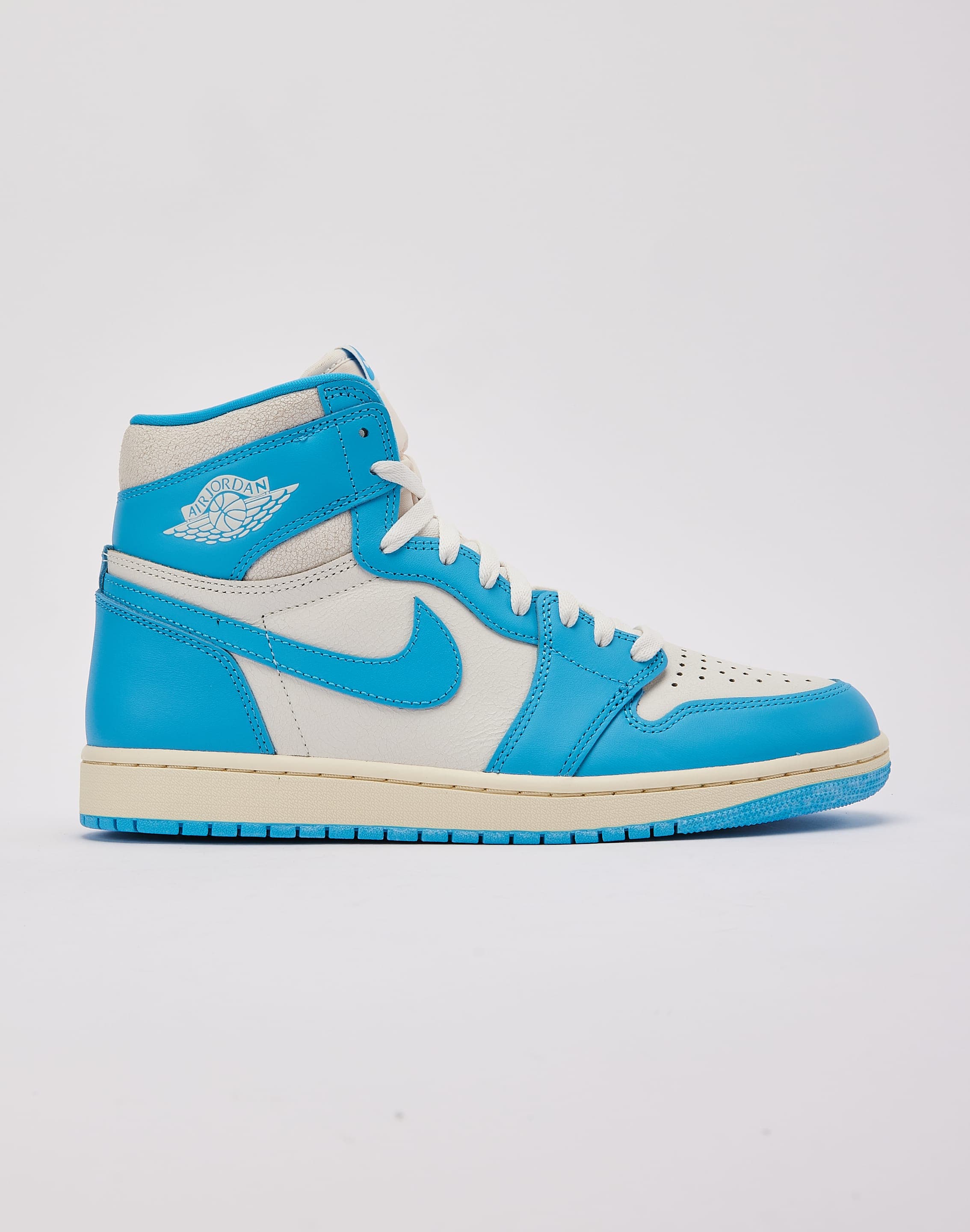
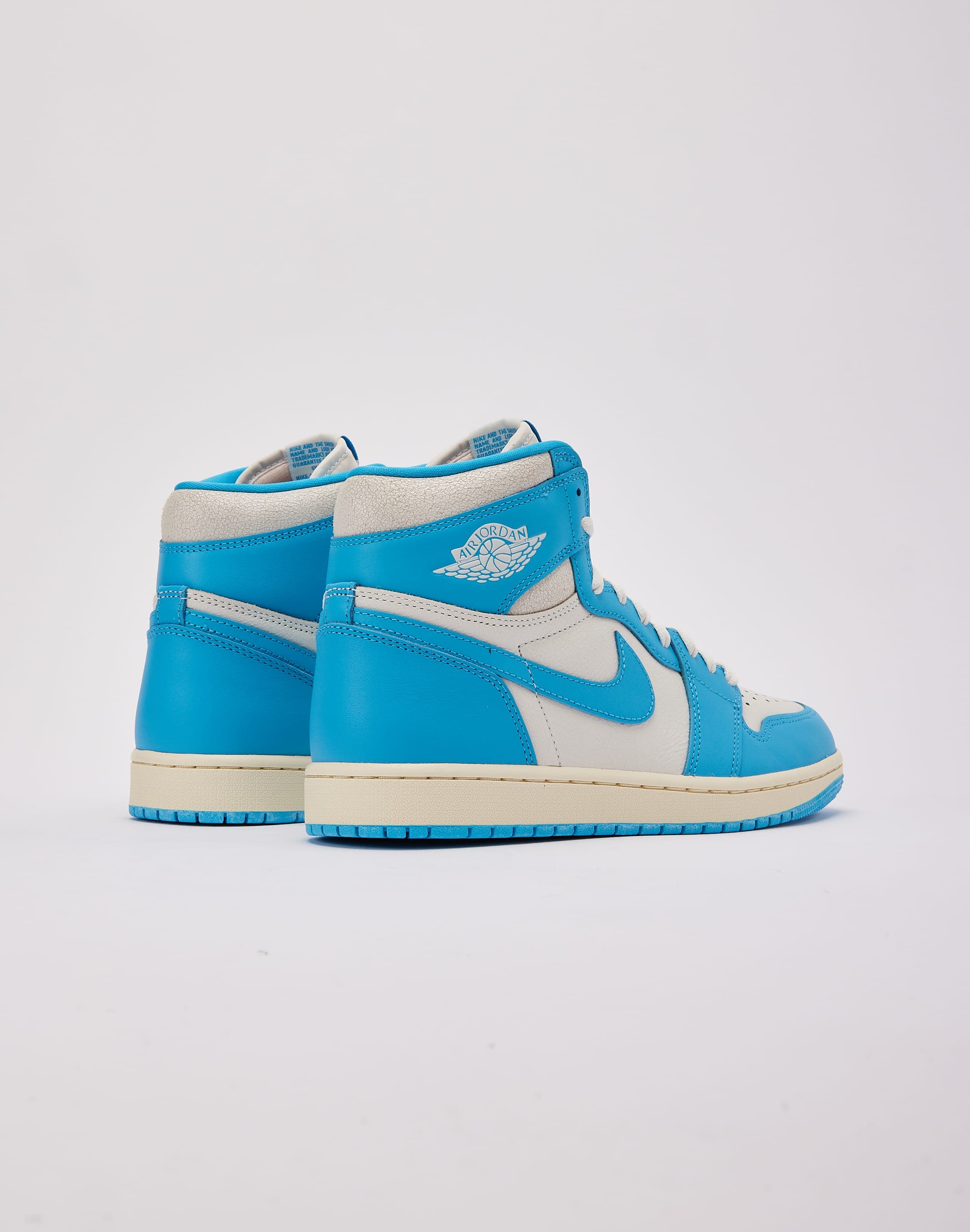
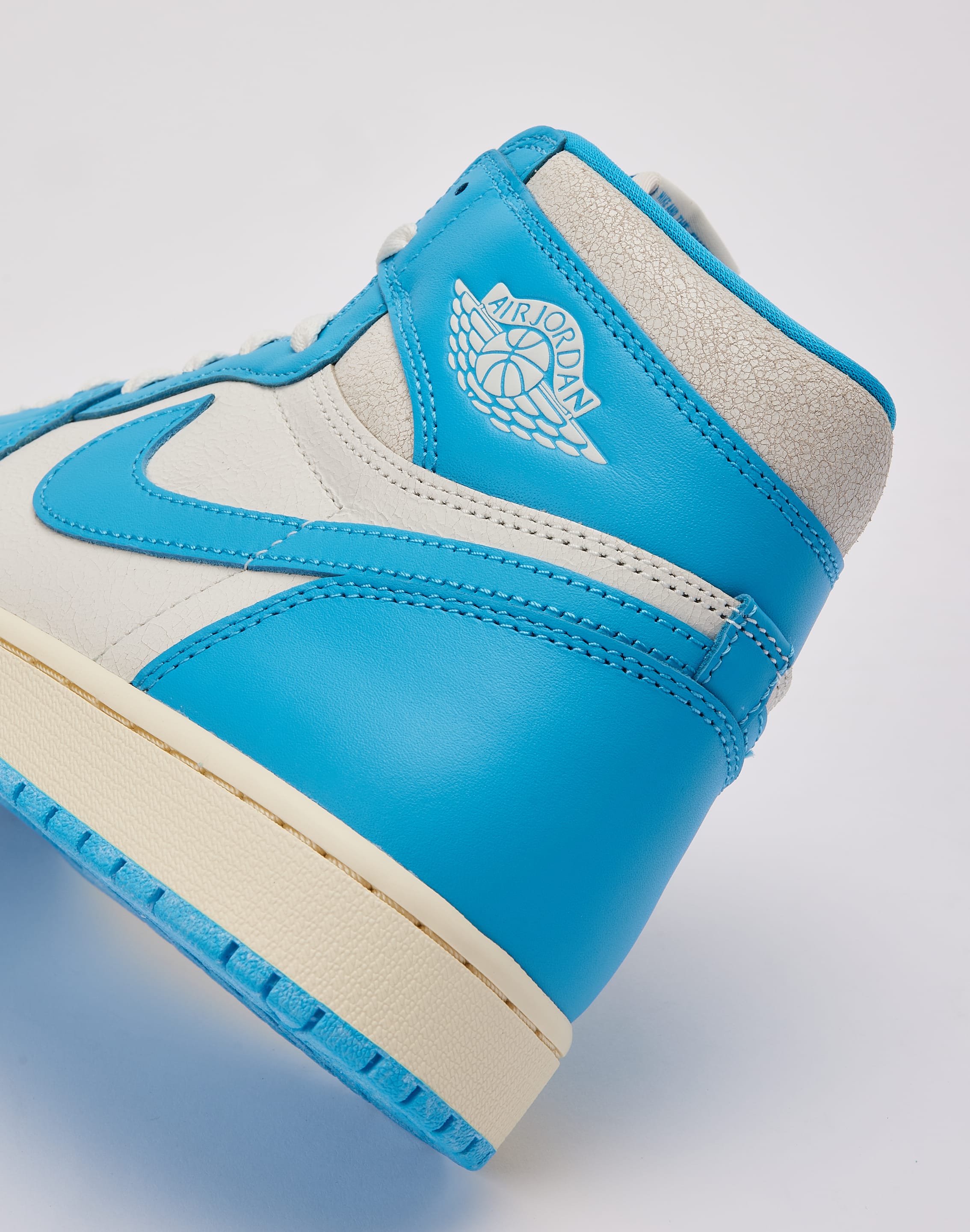
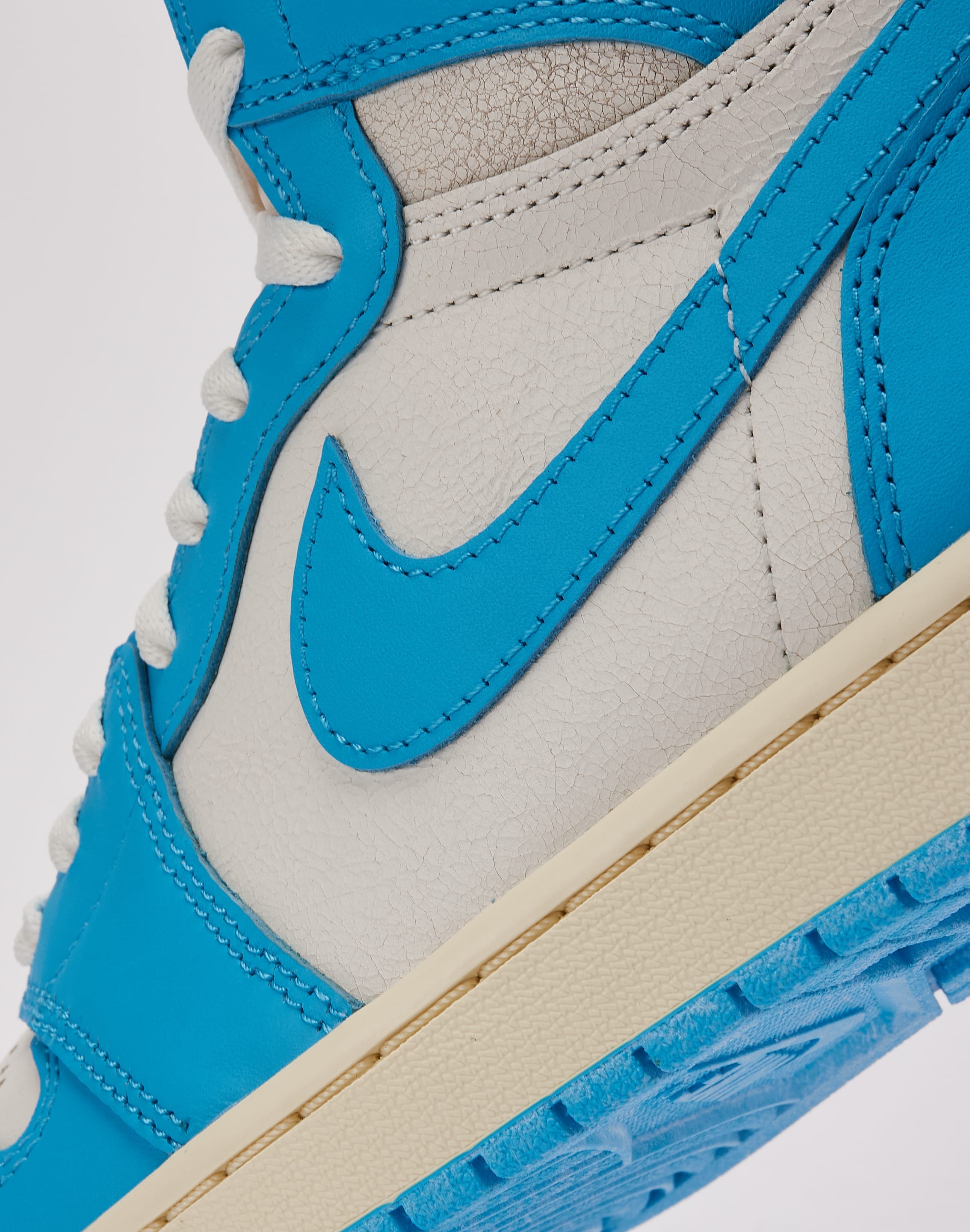
Photos courtesy of DTLR









